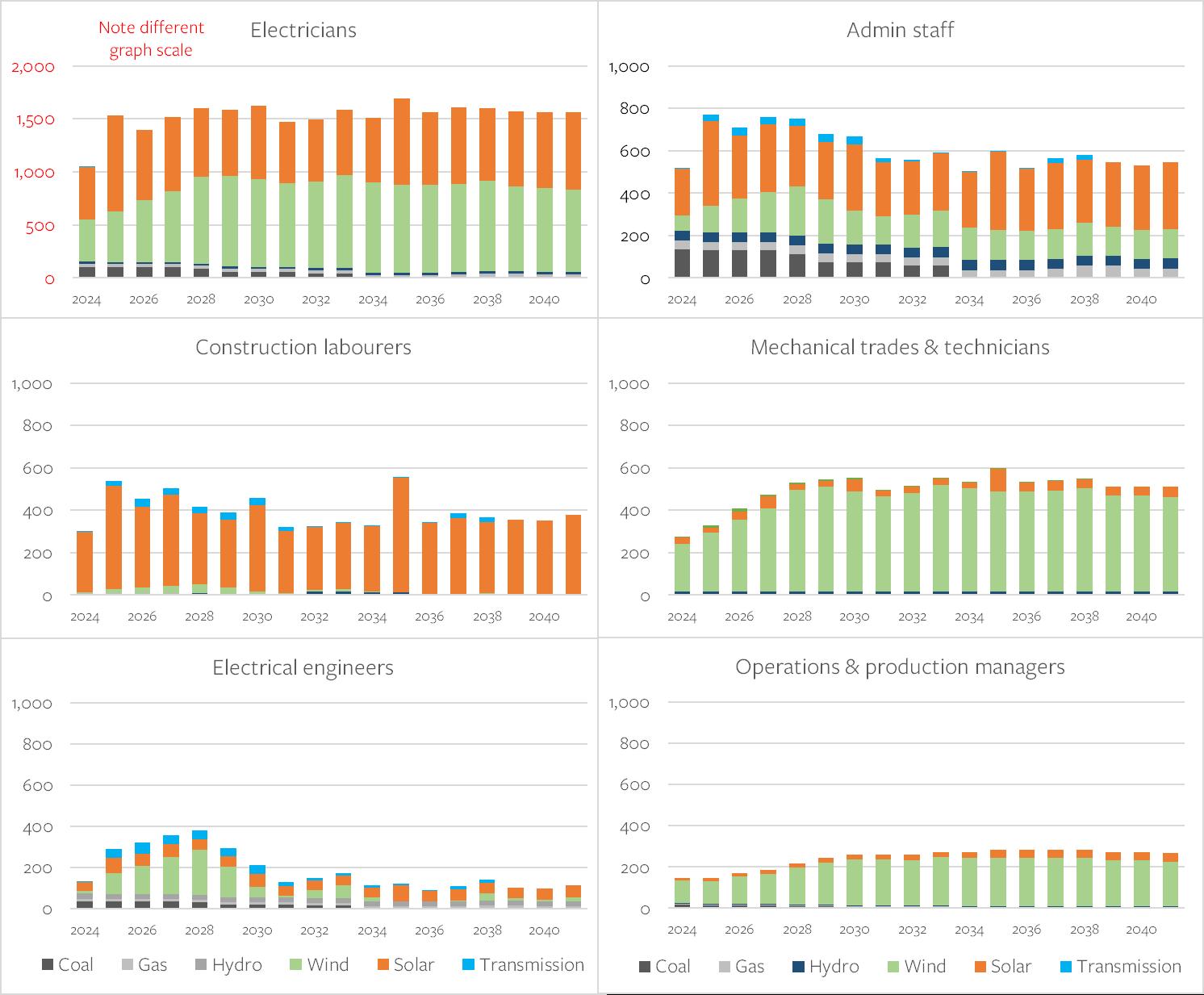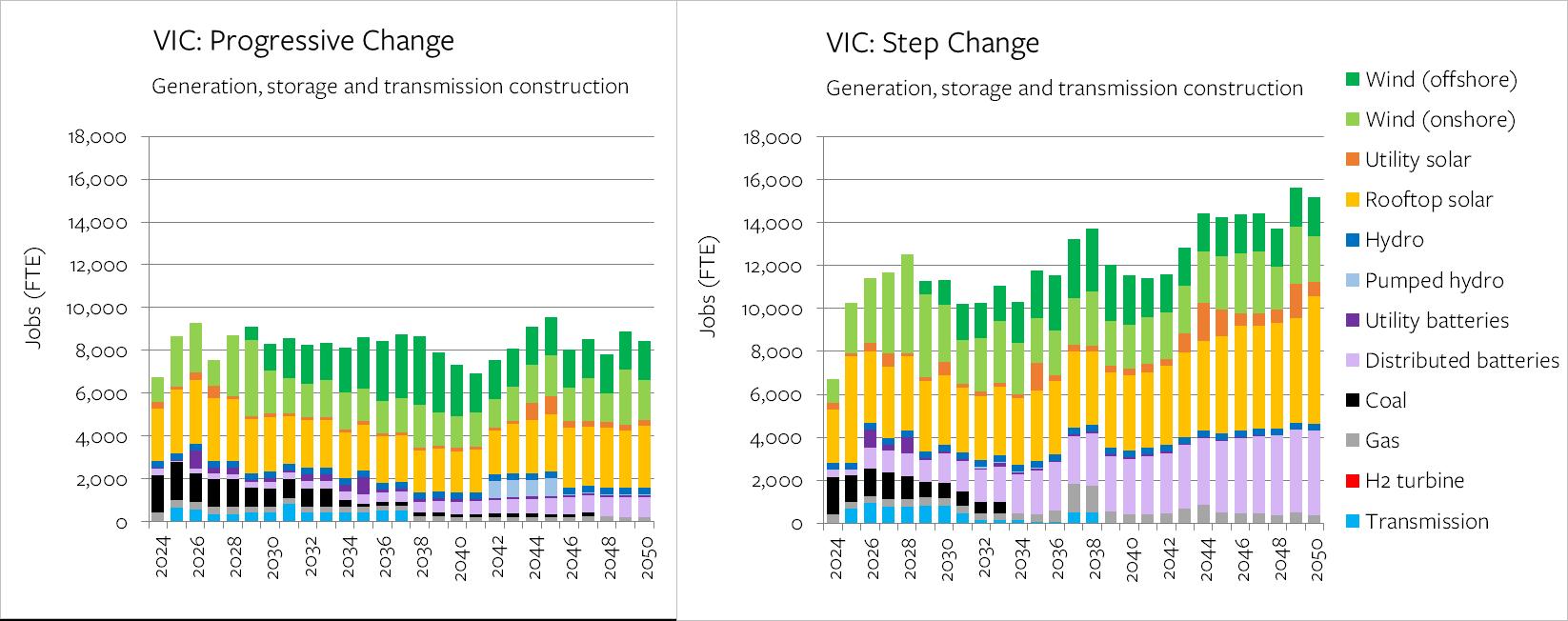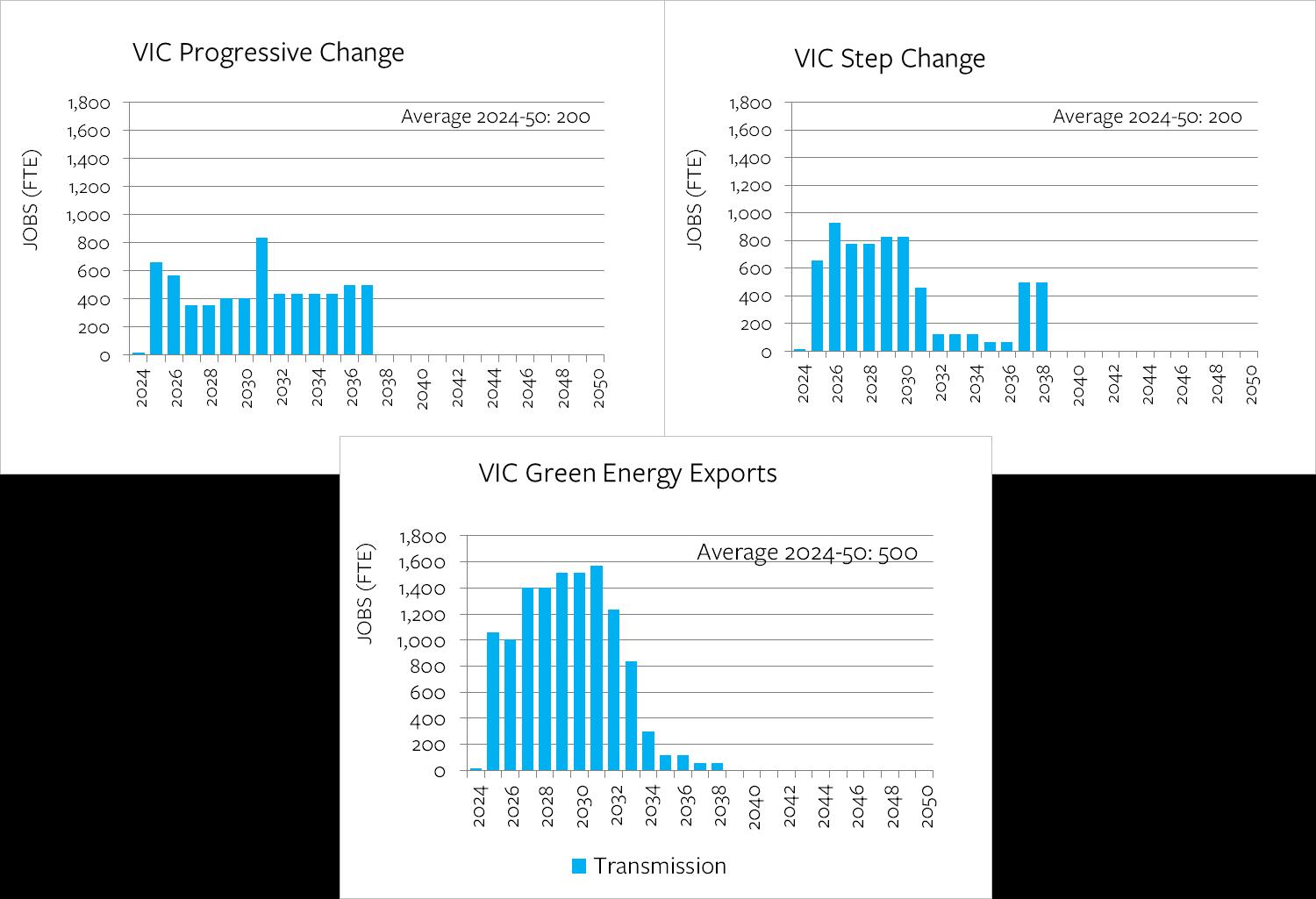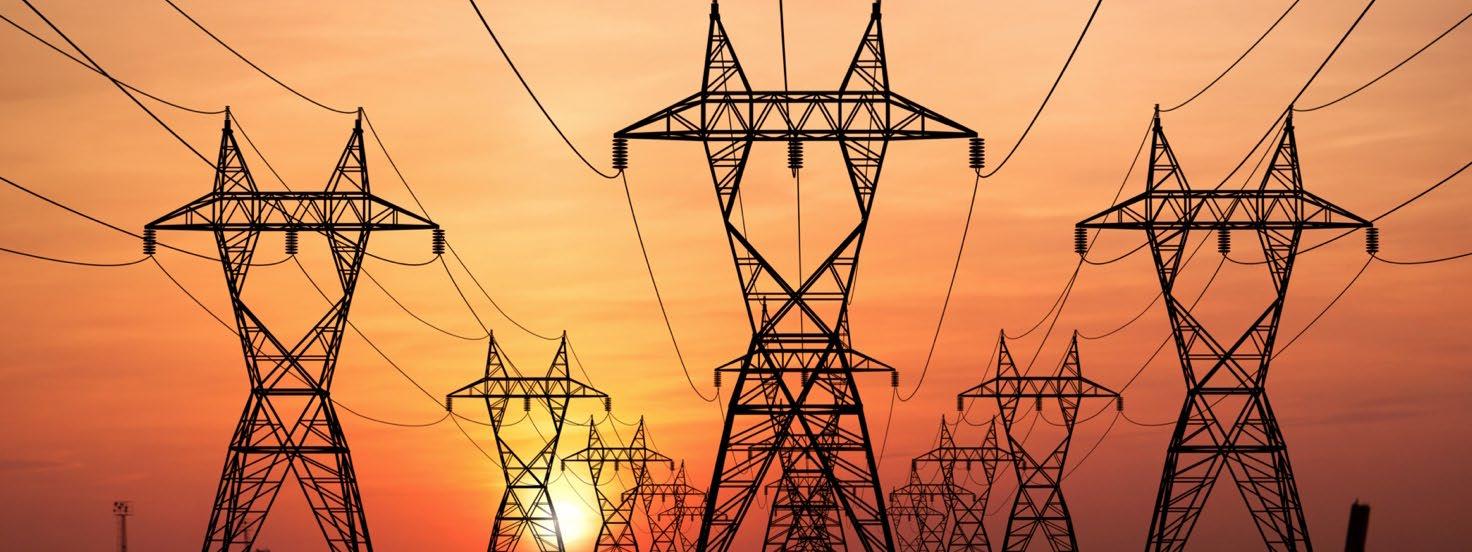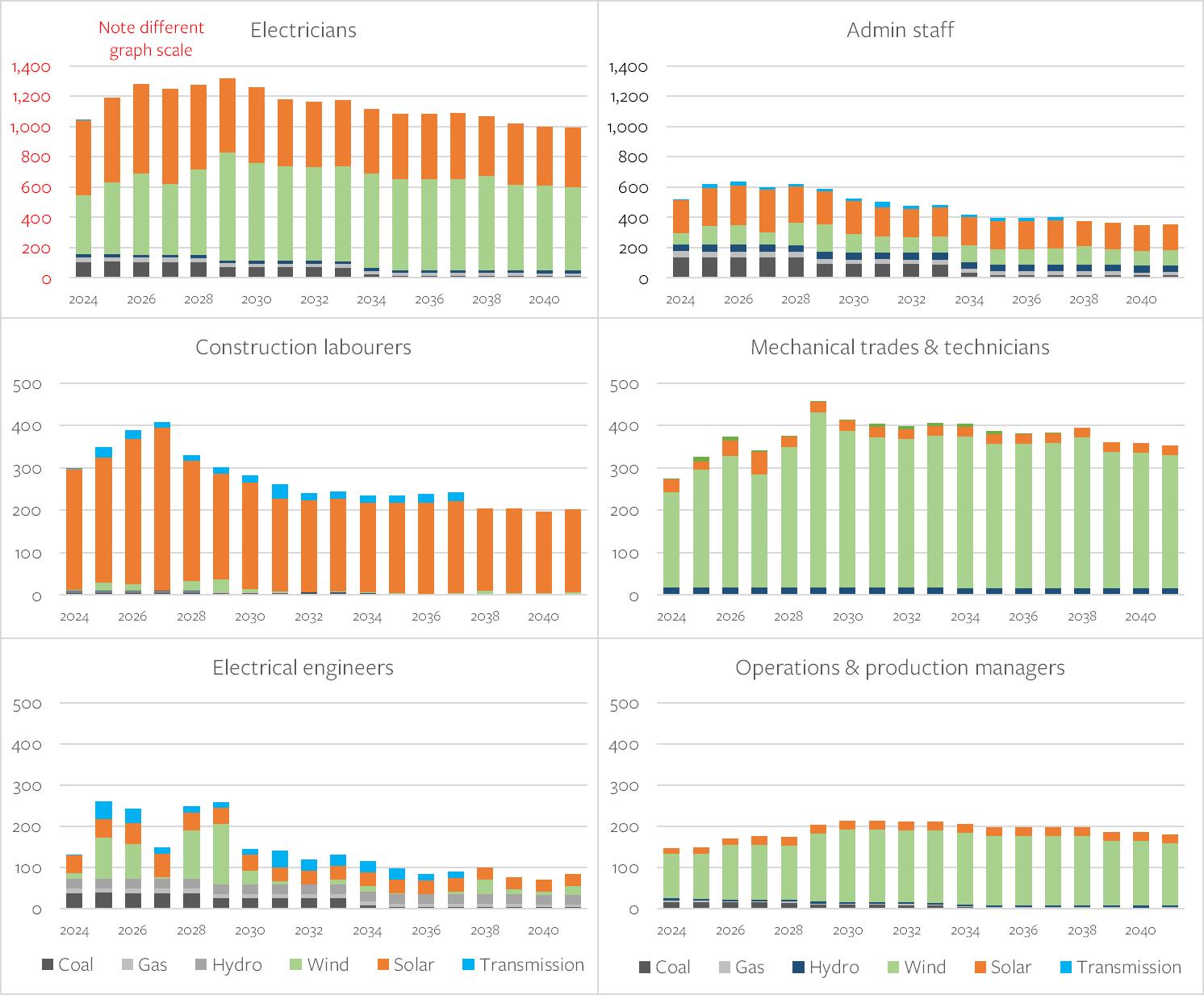Final report
RACE for Change
Research Theme CT11: Electricity Workforce Projections for the 2024 Integrated System Plan: Focus on Victoria
ISBN: 978-1-922746-62-7
September 2024
Citations
Rutovitz, J., Gerrard, E., Lara, H., Tahir, F. and Briggs, C. (2024).
Electricity Workforce Projections for the 2024 Integrated System Plan: Focus on Victoria Prepared for RACE for 2030.
Project partners
Acknowledgements
Project team
Institute for Sustainable Futures, University of Technology Sydney
• Jay Rutovitz
• Helen Lara
• Elianor Gerrard
• Chris Briggs
• Rusty Langdon
• Farzan Tahir
• Josie Toakley
Australian Energy Market Operator (AEMO)
RACE for 2030
We would like to extend our thanks to our project partner the Australian Energy Market Operator (AEMO) for both making this work possible and their extensive help and contributions. We would also like to thank our Industry Reference Group: The Clean Energy Council, Department of Energy and Public Works (Queensland), Department for Energy and Mining (South Australia), Department of Climate Change, Energy, the Environment and Water (NSW Treasury), the Department of Energy, Environment and Climate Action (Victoria), Renewables, Climate and Future Industries Tasmania, and members of AEMO’s 2026 ISP Consumer Panel. Their insights have contributed greatly to the quality of this work The author’s, however, take full responsibility for any errors and omissions.
Acknowledgement of Country
The authors of this report would like to respectfully acknowledge the Traditional Owners of the ancestral lands throughout Australia and their connection to land, sea and community. We recognise their continuing connection to the land, waters, and culture and pay our respects to them, their cultures and to their Elders past, present, and emerging.
What is RACE for 2030?
Reliable, Affordable Clean Energy for 2030 (RACE for 2030) is an innovative cooperative research centre for energy and carbon transition. We were funded with $68.5 million of Commonwealth funds and commitments of $280 million of cash and in-kind contributions from our partners. Our aim is to deliver $3.8 billion of cumulative energy productivity benefits and 20 megatons of cumulative carbon emission savings by 2030. racefor2030.com.au
Disclaimer
The authors have used all due care and skill to ensure the material is accurate as at the date of this report. The authors do not accept any responsibility for any loss that may arise by anyone relying upon its contents.
List of Abbreviations
Acronym Term
AEMO Australian Energy Market Operator
FTE Full-Time Equivalent
ISF Institute for Sustainable Futures
ISP Integrated System Plan
NEM National Electricity Market
O&M Operations & Maintenance
PV Solar Photovoltaic
VIC Victoria
1 Introduction
This report provides projections for the electricity sector workforce in Victoria. It is part of a wider study 1 that looks at the projected electricity workforce requirements associated with the Australian Energy Market Operator’s (AEMO) 2024 Integrated System Plan (ISP).
Projections cover the workforce needed to build and operate the generation and storage infrastructure and construct the new transmission lines included in the ISP for Victoria.
The project was conducted by the Institute for Sustainable Futures, University of Technology Sydney (ISF) in partnership with AEMO and funded by the RACE for 2030 Cooperative Research Centre. An Industry Reference Group made up of representatives from state government, industry and peak bodies, provided valuable insights.
The aim of this report is to provide stakeholders with an in-depth understanding of the workforce implications of different electricity scenarios, with a specific focus on Victoria. This report develops workforce projections broken down by technology, occupation and location, for each of the ISP’s three scenarios.
The ISP’s three scenarios (or optimal development paths) reflect various policy and market contexts on the path towards net zero by 2050. All scenarios comply with all existing state and federal legislated targets and consider state and federal energy policies. The scenarios are:
• Step Change includes a rapid pace of energy transition with strong economic growth and with Consumer Energy Resources (CER) playing a strong role. It supports Australia’s commitment to keep global temperature rise to below 2°C.
• Progressive Change reflects a constrained economic and supply chain environment meaning less uptake of CER and deployment of utility-scale developments, as less energy is required to meet the needs of a smaller economy. While meeting legislated commitments, cumulative electricity sector emissions to 2050 are 36% higher than under the Step Change.
• Green Energy Exports indicates an exceptionally fast rate of decarbonisation aimed at Australia making its contribution to keeping global temperature increase to below 1.5°C, with a strong emphasis on a green exports economy and electrification. Cumulative electricity sector emissions to 2050 are 46% reduced compared to the Step Change.
After extensive consultation with a wide range of stakeholders, AEMO has determined that the most likely scenario is Step Change (43% likelihood), followed closely by Progressive Change (42% likelihood), with Green Energy Exports assigned a likelihood of just 15%.
1 Rutovitz, J., Gerrard, E., Lara, H., and Briggs, C. (2024). The Australian Electricity Workforce for the 2024 Integrated System Plan: Projections to 2050. Prepared for RACE for 2030. www.uts.edu.au/isf/explore-research/projects/australian-electricity-workforce-2024integrated-system-plan-projections-2050
Figure1AverageelectricitysectorjobsbyState,2024-2050(StepChange)
Under the Step Change scenario, Victoria averages 12,200 jobs per annum over the projected period from 20242050, meaning it makes up just under a quarter of the total electricity sector workforce in the National Energy Market (NEM)
New South Wales is the leading state, averaging 18,400 full-time jobs per year under the Step Change, followed closely by Queensland (15,800). Victoria is some way behind with 12,200 jobs on average. Solar and wind account for between 61% and 69% of jobs in all states except Tasmania, where hydro and wind account for 75% of jobs.
In the Green Energy Exports scenario, the highest number of jobs are created in Queensland (32,200 on average), followed by New South Wales (22,600) and Victoria (15,900).
See the main report, The Australian Electricity Workforce for the 2024 Integrated System Plan: Projections to 2050 (Rutovitz et al, 2024) for details on the methodology including a full list of employment factors, results for the National Electricity Market as a whole, a comparison of results by State, and recommendations for further work to support planning for workforce development.
There are also downloadable workbooks of results available for each state and for the NEM.
www.uts.edu.au/isf/explore-research/projects/australian-electricity-workforce-2024-integrated-system-planprojections-2050
2 Workforce projections for Victoria by scenario
Electricity sector workforce projections for Victoria are shown for all scenarios in Figure 2 Employment peaks close to 2030 in all scenarios, reflecting Victoria’s legislated emissions target of a 45%-50% reduction on 2005 emissions by 2030 2 There is a general trend upwards for the next 2-4 years, followed by sharp job reductions occurring at slightly different times in each scenario. In Step Change, workforce requirements plateau until the late 2030s, peak again in 2038, drop back, and then generally rise until the end of the period. Progressive Change presents the most stable employment profile, albeit constrained. In Green Energy Exports, workforce growth is exponential over the next three years, followed by an extreme drop of over 10,000 jobs and is a very volatile employment profile overall.
Figure2VIC,electricitysectorjobsbyscenario
• Under the Step Change scenario, there is an average of 12,200 jobs from now to 2050. The workforce nearly doubles by 2028, from 6,700 reaching 12,500.
• Under the Green Energy Exports scenario, there is exponential job growth over the next three years, with numbers reaching 25,800 by 2027. For the remainder of the period to 2050, jobs fluctuate significantly, with four peaks and following troughs. Jobs average of 15,900 over the entire period.
• Under the Progressive Change scenario, average electricity sector employment is lower, averaging 8,300 compared to 6,700 today. The workforce peaks in 2026 with a total of 9,300 jobs. It then drops to 8,200 by 2032 and plateaus for most of the period aside from a trough in the first half of the 2040s where it drops to 6,900.
Totaljobs
When we talk about the number of jobs in this report, we mean the number of full-time equivalent (FTE) positions for each year. These are the sum of people working on construction projects, operations and maintenance, manufacturing (as it relates to the energy sector), and fuel supply for coal and gas generation in that year. One FTE could be one person working full time, two people working full time for six months, or an ongoing full-time job in operations and maintenance. Construction jobs are by their nature temporary, although workers may move from one project to another and be in continuous employment
2 Victorian Climate Change Act, 2017. https://content.legislation.vic.gov.au/sites/default/files/2022-06/17-5aa008%20authorised.pdf
Figure3VIC,jobsbyphase(allscenarios)
Figure 3 shows the total employment by project phase, including manufacturing, development and construction, operations and maintenance, and fuel supply jobs for coal and gas generation. Under all scenarios, development and construction jobs dominate in the next three years This gradually switches to operations and maintenance (O&M) roles, which overtake in mid 2030s. The steady growth in O&M jobs under all scenarios results from the increased fleet of renewable energy and storage projects coming online
By 2050, under Step Change, O&M represents 58% of the total electricity sector workforce. Under Green Energy Exports it reaches 60% and under Progressive Change, 61% The O&M workforce will be servicing not only utilityscale developments, but also the growth in rooftop solar and distributed batteries.
In Figure 4, jobs are shown according to technology group for each scenario. The breakdown covers renewables, storage, transmission construction and coal and gas. Under all scenarios, renewables account for the largest share of jobs by a considerable margin
Figure4VIC,jobsbytechnologygroup(allscenarios)
3 Employment by occupation for Victoria
When it comes to planning for the energy transition, occupational employment trends – the type of jobs required –provide government, industry, the training sector, and the community with vital insights. This information can inform policy design, education and training packages, as well as individual employment pathways.
Figure 5 illustrates the average employment demand from 2024 through to 2041 in terms of occupational structure (employment grouping) for Step Change. It includes generation technologies and the construction of transmission lines but does not include employment in batteries. Employment in batteries is not included because we do not have sufficient occupational share data due to the emerging nature of the technology. Solar includes both rooftop and utility-scale, although the majority of the employment is in rooftop solar.
For Victoria, the occupational group with highest number of jobs is trades and technicians, with an average of 2,800 jobs. Wind is the dominant technology, accounting for nearly half of the trades and technician workforce.
• Following trades and technicians is the professional workforce, which includes occupations such as engineers, finance, and stakeholder and community engagement professionals. The professional workforce averages 1,600 from now until 2041
• Managers average 1,300 jobs a year, driven in large part by the demand for construction managers in the build out of renewable energy infrastructure.
• Labouring jobs average just under 1,000 from now until 2041. These jobs will largely be construction labourers, with solar construction accounting for most of the workforce. An average of 600 administrative jobs will be required under Step Change. Lastly, machine operators (such as truck drivers and crane operators) average 500 jobs, with solar contributing significantly to demand.
Figure5VIC,averageoccupationalstructure
To effectively manage labour supply and the requisite skills and training, the peaks in employment may be the most significant The labour requirements under Step Change for the peak year for energy sector employment in Victoria, 2038, are shown in Figure 6 This differs under Progressive Change and Green Energy Exports (shown in Appendix A), which peak in 2026 and 2027 respectively
Under Step Change electricians are in high demand in 2038, with 1,600 electricians needed, with the wind and solar sectors accounting for the bulk of demand This is followed by a demand for 700 professionals, including finance, legal, policy and other services; the solar sector has the most demand, followed by the wind sectors. Admin staff require 600 jobs in the peak year under Step Change
Figure6,in-demandoccupationsduringpeakyear(2038)
Figure7 VIC,in-demandoccupationsannualrequirementbytechnology,StepChange
Note: Electricians have a scale reaching 2,000 jobs, whereas other occupations have a scale reaching 1,000 jobs
Figure 7 shows the six most in-demand occupations by technology for the period 2024-2041 under Step Change. Electricians dominate, growing steadily over the next five years before plateauing. Administrative staff are required in significant numbers, with a more volatile employment profile and an average demand of 600 Construction labourers also follow a volatile employment profile, with solar construction driving demand. Mechanical trades and technicians have more consistent growth, rising steadily until the 2030s and plateauing, with wind needing the most workers.
3.1 Workforce projections by technology for Victoria
Victoria is set to see significant employment growth in the wind and rooftop solar sectors under all scenarios. Figure 8 shows the average electricity sector jobs under each scenario, broken down by technology. Figure 9 shows the annual workforce requirements and gives a more detailed technological breakdown.
• Rooftop PV and distributed batteries draw from the same workforce, with installers working across both technologies. Combined, this sector accounts for between 38% and 50% of average employment in all scenarios.
• Under all scenarios, employment in wind makes up at least 34% of the average electricity sector workforce
• Utility-scale solar accounts for an average of 3%-9% of the total electricity sector workforce
These projections include repowering for wind and solar, assuming that wind turbines are replaced after 25 years, utility solar after 30 years, and that 80% of rooftop solar is replaced after 25 years. Repowering refers to the process of replacing hardware due to end of life or because improvements in the technology have significantly enhanced performance, meaning it is more profitable to do so. Any employment associated with recycling of materials including mineral extraction (other than coal and gas for fuel) is not included
Figure8VIC,averageelectricitysectorjobsbytechnologyandscenario
Figure9 VIC,jobsbytechnology(allscenarios)
Note: the different graph scales: the top two graphs go to 18,000 jobs and the bottom to 30,000 jobs.
3.2 Wind
Employment in the Victorian wind sector is shown in Figure 10. Under Step Change, wind averages 4,100 jobs. Under Progressive Change, average employment is lower at 3,500. In Green Energy Exports, average jobs rise to 5,900.
Offshore wind starts up in 2029 under all scenarios Under Step Change and Progressive Change, offshore wind averages 1,600 jobs over the period. Under Green Energy Exports, offshore wind employment averages 1,300 from now until 2050.
Repowering kicks off significantly in the early 2030s across all scenarios, but overall numbers are small. Repowering contributes more significantly in the mid-late 2040s.
Under Progressive Change and Green Energy Exports, the employment profile in the lead up to 2030 is volatile, while Step Change grows steadily In both Step Change and Progressive Change scenarios, the peak year for wind sector employment is 2038, reaching just under 6,000 jobs. Green Energy Exports peaks with 16,200 jobs in 2027, and over the period from now until 2050, most of the share of employment goes to onshore wind. Under Progressive Change and Step Change, offshore wind starts to account for a majority of the wind workforce by the mid 2030s
Figure10 VIC,jobsinwind(allscenarios)
3.3 Utility-scale solar
Utility-scale solar averages 300 jobs between now and 2050 under Progressive Change, 500 jobs under Step Change and 1,500 jobs under Green Energy Exports (Figure 11).
Under Progressive Change, there is initial volatility in the jobs profile, before stabilising in 2028 at 150 jobs, until a minor construction boom in 2044.
Under both Step Change and Green Energy Exports demand fluctuates throughout the period. In Step Change there are minor booms in the late 2020s and in 2030 (just over 600 jobs), with more significant booms occurring in 2035 and the mid-2040s. In Green Energy Exports there is a higher demand for workers overall, with major construction booms in 2030 (4,300 jobs) and again in 2044 (5,100).
Repowering for utility solar is assumed to start 30 years after installation, meaning repowering of large-scale solar starts to occur in 2048
Figure11 VIC,jobsinutility-scalePV(allscenarios)
3.4 Rooftop solar and distributed batteries
For Victoria, rooftop solar and distributed batteries contribute significant numbers to overall electricity sector employment growth under all scenarios (Figure 12). Under Progressive Change, an average of 3,000 jobs are in rooftop solar and distributed batteries from now until 2050. Under Step Change, however, this figure doubles with an average of 6,000 jobs. Green Energy Exports follows a similar profile as Step Change, with steady annual growth, but averages 6,600 jobs. Under all scenarios, repowering of rooftop solar begins to contribute to the overall share of jobs in the mid-2030s, growing consistently.
Figure12 VIC,jobsinrooftopPVanddistributedbatteries(allscenarios)
3.5 Large-scale storage and hydro
Jobs in large-scale storage, that is utility-scale batteries, pumped hydro and hydro projects are shown in Figure 13 and Figure 14
Employment trends in pumped hydro are volatile, indicative of the workforce requirements for construction of the projects. Employment in conventional hydro remains steady and consistent under all scenarios.
Under Progressive Change, there is an average of 400 jobs, with a boom in the pumped hydro workforce in 20422045. Under Step Change scenario, there is an average of 300 jobs, with very little pumped hydro Under Green Energy Exports, there is an average of 400 jobs, with an earlier pumped hydro construction boom from 2028-2031.
Figure13 VIC,jobsinpumpedhydro(allscenarios)
Jobs in utility batteries are low and volatile under all scenarios, peaking in 2026. Under Progressive Change, jobs average 200 While in both Step Change and Green Energy Exports, jobs average 100.
Figure14 VIC,jobsinutilitybatteries(allscenarios)
3.6 Transmission construction
Employment for transmission construction 3 in Victoria is shown in Figure 15 for all scenarios. Under Progressive Change and Step Change, the workforce averages 200. Under Green Energy Exports average jobs rise to 500.
Under Step Change, the workforce peaks at 900 in 2026, while under Progressive Change, jobs peak at 800 in 2031 In Green Energy Exports, jobs peak at 1,600 in 2031, before steadily declining until 2038. In each scenario, transmission construction employment ends in 2038.
Actual employment in transmission, it should be noted, is likely to be more variable than illustrated here, as these calculations work with the assumption that employment is spread evenly across the construction period for each project.
Figure15 VIC,jobsintransmission(allscenarios)
3 In this study, only employment in transmission construction is included in projections, as we do not have employment factors for operations and maintenance.
3.7 Coal and gas
Jobs in coal and gas combined (Figure 16) are at approximately 2,000 now and fall to under 500 by 2050 in all scenarios. Jobs in coal account for the greatest share at present, and these are phased out in both Step Change and Green Energy Exports by 2033. For coal and gas combined, jobs average at 800 over the period under both Step Change and Progressive Change. Under Green Energy Exports, this is lightly higher at an average of 900 jobs.
In Progressive Change, coal jobs decline close to 200 by 2035, and remain there until 2047, when they drop to zero. Jobs numbers in gas are low, starting at 400 and dropping to 200 by the early 2030s where they remain until 2050.
In Step Change, coal jobs decline to zero by 2034, and gas jobs are both higher and more volatile. They peak at 1,300 in 2037. Under Green Energy Exports the decline in coal employment is sharper, ending in 2032. Gas employment is volatile overall, with a peak of 2,000 jobs in 2037.
Figure16VIC,jobsincoalandgas(allscenarios)















